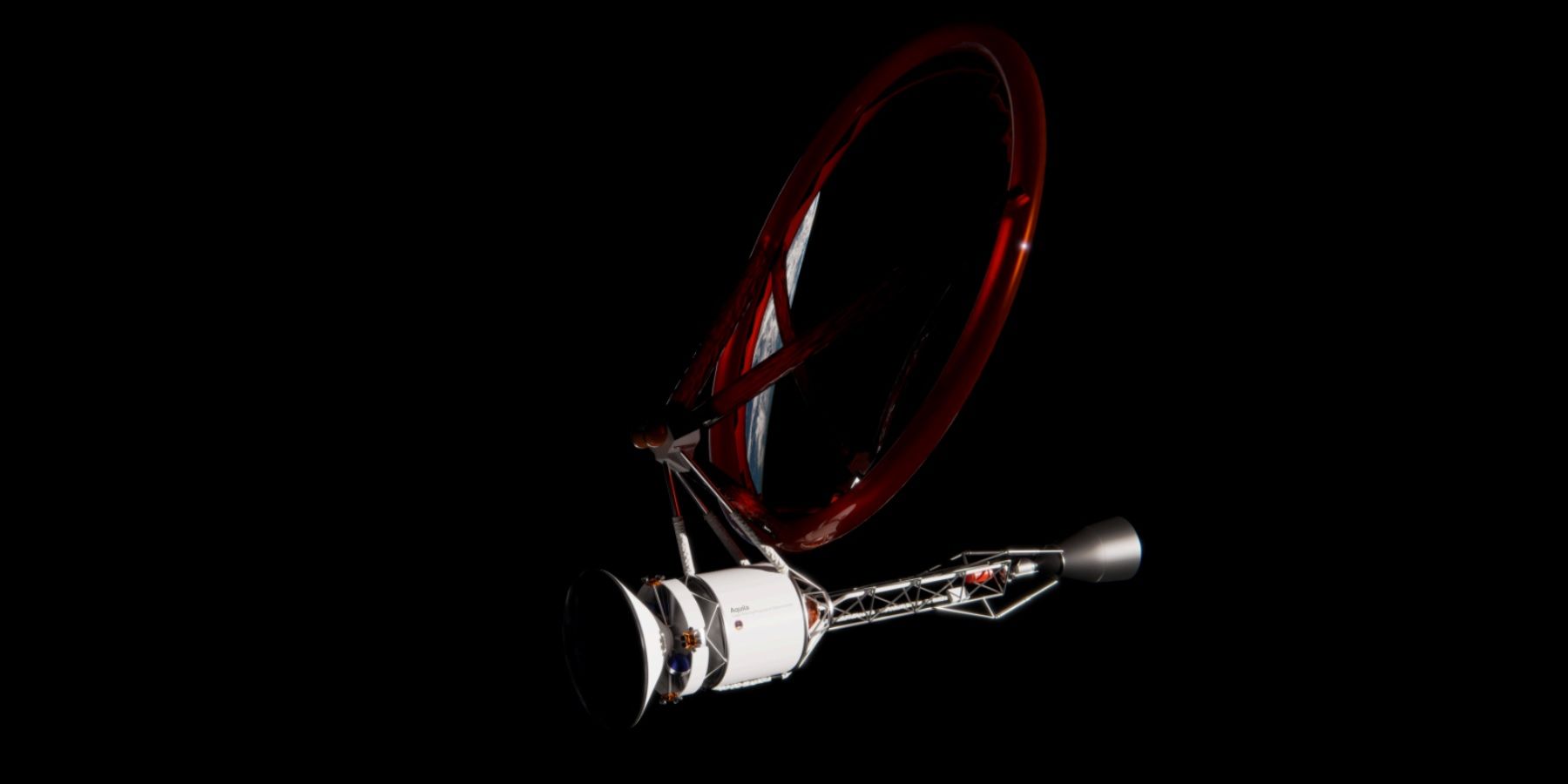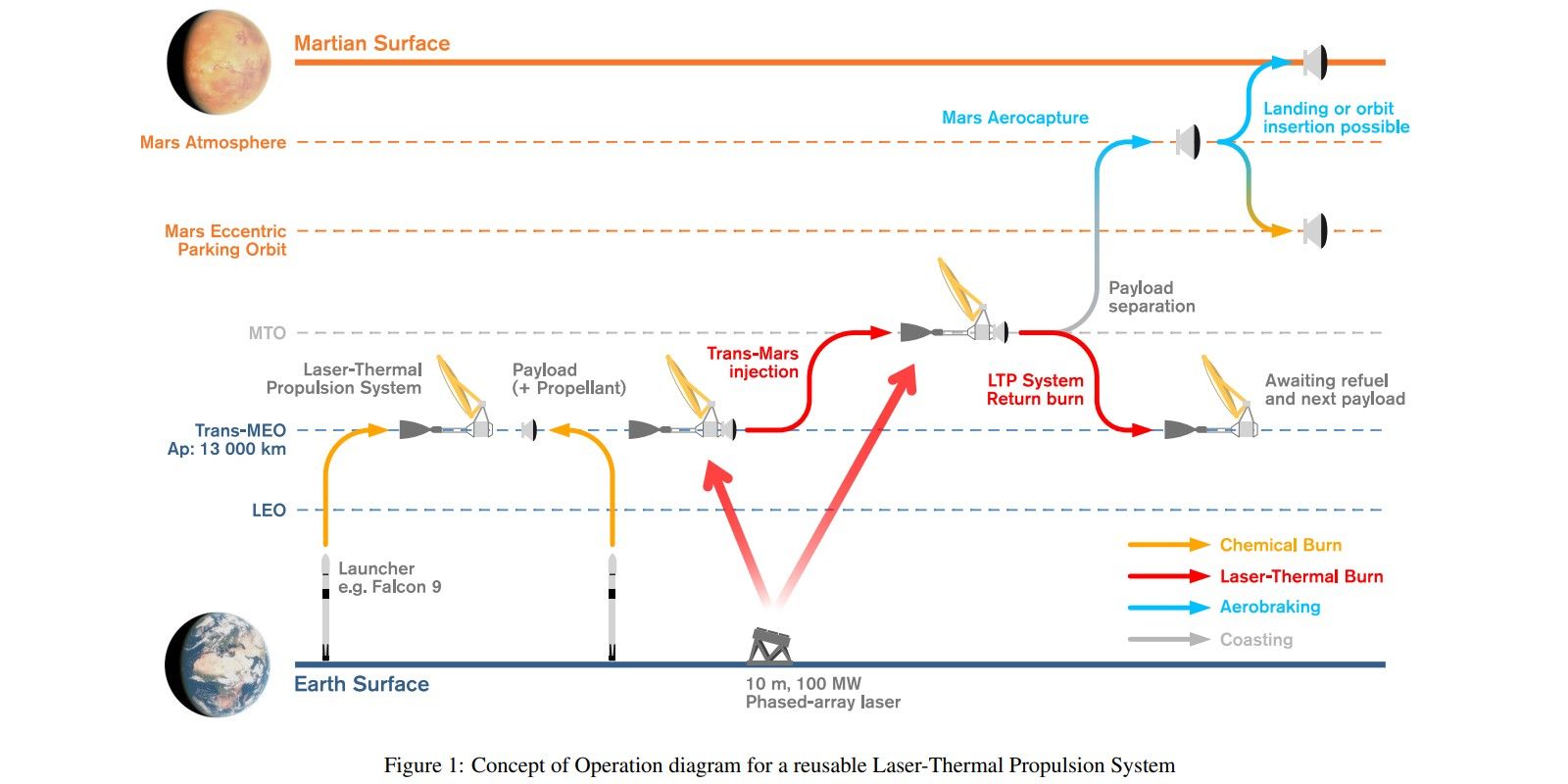A team of engineers has proposed a laser-based propulsion system that could reduce the transit time to Mars down to just 45 days. A journey to Mars is not like taking a car and reaching the nearest Starbucks. Earth and Mars keep moving in their orbits around the sun, which means the two planets are never at the same distance from each other. The best way forward for a Mars mission is to target the time frame when both worlds are at the closest approach, leading to a 'minimum cost' trajectory. That particular pathway is called the Hoeman Transfer Orbit, but the launch window opens only after 26 months, and it would still take about nine months to reach Mars.
Once a team has landed on Mars, it will have to spend another three to four months on the planet for Mars and Earth to align for proximity and then embark on the return journey, which will take another nine months. Bringing supplies such as food, water, scientific equipment and medical aid alongside a massive amount of fuel will be a problem. A crew of six would need to carry an estimated three million pounds of cargo for such a mission. Based on the peak load-carrying capacity of existing tech, it would take ten of SpaceX's mighty Starship Super Heavy rocket just to take that cargo into orbit. Carrying it to Mars will take a massive upgrade in both capacity and numbers.
However, experts can solve the radiation exposure and cargo problems to a large extent if the engines could be supercharged. And that's where a laser propulsion system can come to the rescue, reducing the Mars journey duration to as little as 45 days. A team from McGill University has proposed a novel propulsion system that relies on lasers to heat hydrogen fuel and propel a spaceship to Mars. So far, the only feasible method to achieve such a short Mars journey window was thought to be a nuclear-powered rocket engine. The whole setup consists of a ground-based laser array of 10-meters in size that can deliver 100MW of power via a focused beam. The spacecraft itself is connected to an inflatable chamber that focuses the incoming laser beam on the hydrogen propellant fuel, heating it up to generate thrust.
Many Problems, One Solution
The team calls it a Laser-Thermal Propulsion System (LTPS) and claims that the Earth-based laser array can focus on a target that is up to 50,000 km away. The LTPS, hydrogen propellant, and payload can either be launched separately or together atop a beast like the Falcon 9 rocket. Once the cargo is released into the high-energy transfer orbit to Mars, the LTPS returns to the original elliptical orbit. For the actual combustion, the Earth-based laser falls on the inflatable parabolic reflector, which concentrates and directs it to the core of hydrogen plasma, heating it to a temperature that can reach up to 40,000 Kelvin. The core is then used to heat the surrounding flow of gaseous hydrogen, which is then expelled through a nozzle to generate thrust.
Now, the ability to reach Mars doesn't only have to do with cutting down on the journey duration. The longer astronauts stay in a spacecraft, the higher is the risk of exposure to galactic cosmic rays (GCRs). NASA's research has found strong evidence that radiation exposure increases lifetime risk for cancer and degenerative diseases. And the radiation exposure beyond Earth's orbit is no small number. 1Milli-Sievert (mSv) of radiation is equivalent to three chest x-rays. In space, the range of ionizing radiation falls anywhere between 50 to 2,000 mSv, which effectively means going through up to 6,000 x-ray examinations. Plus, there is the risk of space anemia, which was recently documented in NASA-assisted research. Moreover, there is also the potential threat of coronal mass ejections (CMEs) that can jeopardize the entire mission.


